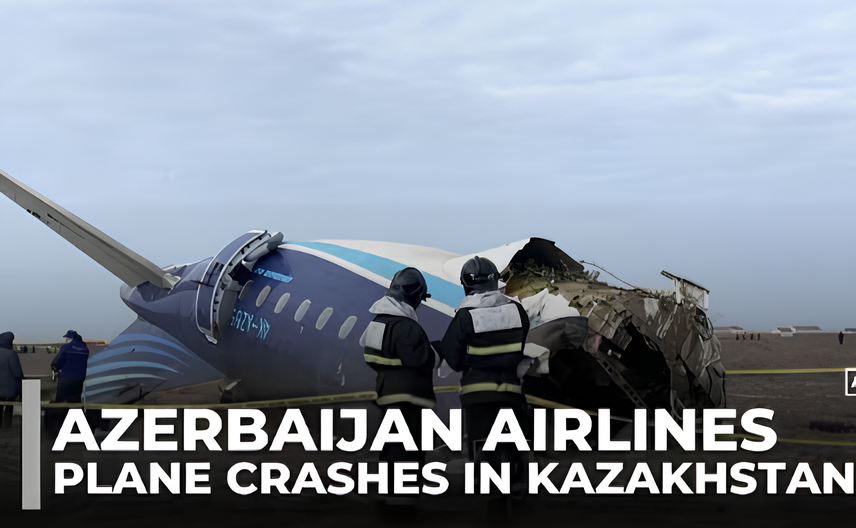Azerbaijan Airlines is a major carrier with a rich history. It has a significant fleet size and serves numerous destinations.
However, like any airline, it has faced its share of challenges. One of the most tragic is the occurrence of plane crashes.
This article delves into the details of these unfortunate incidents. It provides an in-depth look at the specific crashes involving Azerbaijan Airlines.
From the causes to the aftermath, we explore every facet. We examine the airline’s response, the investigations, and the impact on the aviation industry.
We also provide a historical context, shedding light on the airline’s safety record. This comprehensive review aims to give readers a clear understanding of these incidents.
Join us as we navigate through this complex and sensitive topic.
Brief Overview of Azerbaijan Airlines
Azerbaijan Airlines, often referred to as AZAL, is the flag carrier of Azerbaijan. It was established in 1992, shortly after the country gained independence.
Over the years, the airline has expanded its operations significantly. Its fleet consists of modern aircraft that serve various domestic and international routes.
Azerbaijan Airlines is known for its commitment to providing quality service. It aims to ensure passenger safety and comfort across all its flights. Despite challenges in the aviation industry, AZAL continues to strive for excellence and maintain its reputation as a key player.
Historical Context of Azerbaijan Airlines Incidents
Azerbaijan Airlines has witnessed several incidents over the years. While aviation remains largely safe, mishaps can occur.
Each incident has contributed to the focus on improving safety standards. These events have reinforced the airline’s commitment to continuous safety enhancements.
Not all incidents have resulted in fatalities, but they have highlighted potential risks. Analyzing these events helps in refining protocols.
A summary of notable past incidents includes:
- Date of incident
- Flight number and aircraft model
- Brief description of the incident and outcome
Understanding these historical contexts is crucial. It provides insights into the airline’s responses and actions undertaken. Improvements and changes following such incidents reflect the aviation industry’s evolution and dedication to safety.
The Recent Azerbaijan Airlines Plane Crash
A recent Azerbaijan Airlines plane crash has brought the airline into the spotlight. The incident was unexpected and tragic. It occurred during routine flight operations, raising many questions.
The flight involved a popular aircraft model known for reliability. However, unforeseen circumstances led to this unfortunate event.
The exact cause of the crash is still under investigation. Initial reports indicate several contributing factors that need exploration.
Emergency services responded swiftly to the crash scene. Their efficient action undoubtedly saved lives, minimizing casualties.
In the aftermath, the airline expressed deep sorrow. Public statements were made emphasizing their commitment to passenger safety.
The event has sparked discussions about aviation safety. It serves as a somber reminder of the risks present in air travel.
Flight Details and Crash Information
The flight was en route from one major city to another. Departing in the early hours, the aircraft entered turbulence.
Moments later, communication with air traffic control was lost. This unexpected silence indicated something was amiss.
An abrupt descent followed, alarming many. Reports emerged of a crash landing in a remote area.
Crews reached the crash site with urgency. They worked tirelessly, aiming to rescue anyone they could.
Casualties and Survivors
The crash resulted in several casualties, a deeply saddening outcome. Despite the loss of life, there were survivors.
Survivors recall the moments of impact vividly. Their harrowing tales provide insight into the incident.
Immediate medical help was provided to the injured. Hospitals nearby admitted many with varying injuries.
Grief engulfed the families of those who perished. The airline offered support to help them cope with their losses.
Possible Causes and Initial Findings
Investigators are piecing together the causes of the crash. Mechanical failure is a possible factor.
Weather conditions at the time are being reviewed. Storms were reported in the vicinity, complicating the flight.
The aircraft’s black boxes are crucial to the investigation. They hold valuable data, shedding light on the final minutes.
Human error is not ruled out either. Evaluating pilot actions before the crash is part of the inquiry.
Response and Actions Taken by Azerbaijan Airlines
In response to the tragic crash, Azerbaijan Airlines demonstrated decisive action. They quickly set up a crisis management team to handle the situation. This team worked around the clock coordinating with authorities.
The airline prioritized support for affected families. Immediate assistance was offered to address their urgent needs. Additionally, dedicated helplines were established for information dissemination.
A collaborative approach was evident as the airline worked with international experts. This ensured a thorough and unbiased investigation. They pledged full cooperation with the agencies involved.
Moreover, Azerbaijan Airlines initiated a comprehensive review of their safety protocols. This aimed to prevent future incidents by identifying potential safety gaps.
Official Statements and Press Releases
Azerbaijan Airlines issued prompt statements following the crash. They expressed deep condolences for the bereaved families. Transparency was emphasized as they communicated ongoing investigation efforts.
Press releases highlighted the airline’s commitment to safety. They reassured the public of continuing safe flight operations.
Compensation and Support for Victims’ Families
The airline immediately addressed compensation for victims’ families. They provided financial aid to help ease their burdens. This gesture aimed to offer some relief amidst the grief.
Support extended beyond monetary compensation. Counseling services and emotional support were made available to affected families.
Role of Aviation Authorities in the Investigation
Aviation authorities took swift action following the Azerbaijan Airlines plane crash. The National Civil Aviation Agency of Azerbaijan spearheaded the investigation. They coordinated with international counterparts to ensure a thorough examination.
These authorities prioritized gathering flight data and evidence. They analyzed black box recordings to determine the sequence of events. Their role was crucial in understanding what led to the disaster.
Meanwhile, international bodies like the ICAO offered technical support. Their expertise helped guide the investigation process. This collaboration underscored the importance of international cooperation in aviation safety.
Regular updates from these authorities kept the public informed. Transparency was maintained throughout the investigation. Their findings would eventually guide future safety enhancements.
Safety Measures and Protocols
Prior to the crash, Azerbaijan Airlines followed rigorous safety protocols. These measures were aligned with international standards.
However, the incident prompted a reevaluation of existing practices. This aimed to enhance passenger and crew safety across the airline’s operations.
Impact on the Airline and Aviation Industry
The Azerbaijan Airlines plane crash had significant repercussions. The immediate impact was felt in the airline’s operations. Many flights experienced delays or cancellations, disrupting schedules.
The incident also affected the airline’s reputation. Concerns about safety led to a decline in passenger confidence. This had financial implications, including potential decreases in bookings.
Industry-wide, the crash spurred discussions on safety protocols. It highlighted the need for stringent compliance with safety regulations. Other airlines reevaluated their own emergency procedures in response.
Long-term, the crash could influence the development of safety technologies. It served as a reminder of the constant need for innovation. The aviation industry remains committed to enhancing passenger safety.
Changes in Safety Regulations and Airline Policies
Following the crash, safety regulations came under review. Authorities and the airline implemented necessary changes.
These modifications aimed at preventing similar future incidents. Enhanced safety policies became a priority to restore public trust.
Conclusion and Looking Forward
The Azerbaijan Airlines plane crash was a tragic event. It underscored the importance of rigorous safety standards. The aviation industry must learn from such incidents.
Going forward, enhancements in safety protocols are crucial. Continuous improvement will ensure safer skies for all passengers. The focus remains on preventing future tragedies.



